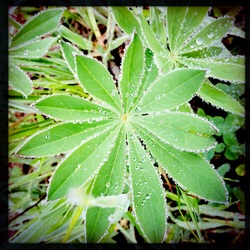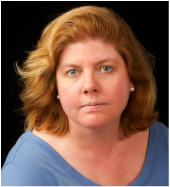ASSAY: A JOURNAL OF NONFICTION STUDIES
1.2
1.2
In the Beginning: Word Processors
|
|
Like most of us, I have been serious about my writing since I was a teenager. This meant that in addition to writing obsessively, I read anything I could get my hands on about the writing process, which in the early 80’s was not much. Since Poets and Writers didn’t exist at the time, this also meant that I read Writer’s Digest and The Writer magazines religiously.
Back then, Writer’s Digest in particular was all hepped up about this new technology that was going to be a game changer for writers: the word processor. As someone who didn’t even own a typewriter but who filled dozens of legal pads with stories and poems and novels, I could see the potential in a system that would make it possible to erase without correction fluid, to cut and paste without scissors and glue. I began to lust after the computers featured in the pages of every issue, computers with names like Kaypro and DEC, and programs like “Wordstar” and “WordPerfect.” To demonstrate my commitment to the people who held the purse strings (my family), I learned typing in high school and even took a summer community education course in word processing between my junior and senior year. Yes. Summer school. I wanted a word processor bad. My dedication worked. I received my first computer, the Macintosh 128K, in 1985 as a joint high school graduation present from my parents and my great-aunt Betty, an independent woman who had always encouraged me in writing and in life. A retired high school business teacher herself, she also understood the importance of keeping up with technology and in owning her own Radio Shack Tandy 1000, was well ahead of the other senior citizens of her time. I’m certain if Aunt Betty were still alive today (at 96), she’d be on Facebook or at least e-mail. In addition to providing me a nice side income typing papers ($1/page, $2 if you wanted me to edit), owning a Mac as I began college and my writing career meant writing and technology have always been wed in my mind. One enabled the other. The first stories I wrote for Blanche Boyd’s fiction workshop were written on that Mac, though eventually they overwhelmed its miniscule memory capacity. My MFA thesis at George Mason University was written on the now-extinct Compu-Add, a PC clone that was all I could afford during my salad days. During our doctoral work at the University of Louisiana at Lafayette, I shared a Mac Color Classic with my husband. I was issued a PC in my first tenure-track job, and it was on various iterations of these that I wrote my first three books. By late 2012 however, my patience sorely tested by viruses and malware, I returned to my Apple roots and have never looked back. I am writing this essay on a MacBook Air, a computer I hope to own for a long time. |
Teaching With Technology 1.0In my early days of teaching, integrating technology in the classroom meant little more than requiring that my students used email and turned in their assignments typed (word-processed). Still, even in the late nineties and early 2000’s, before Web 2.0 had truly reconfigured the literary landscape, I began to understand that technology could do a great deal more than revolutionize composing and editing. The advent of the Internet and the dramatic rise of resources for writers on the web meant that while young writers of my own generation had to make do with a few monthly writing magazines and a handful of books, half of which seemed to have been written by John Gardner; for my students, hundreds of writing sites and communities were just a few clicks away. Some of them understood this--some of my students knew more about resources for writers on the Internet than I did--but most of them didn’t. This gap was the inspiration behind my “Top Ten Writing Websites” assignment, a staple of all of my early creative writing courses, which required students to research and create an annotated list of web sites tailored to their interests and development as writers. Each student presented her list to the entire class, exponentially expanding every class member’s repertoire of writing sites, including my own.
The Cyber-World TourMeanwhile, a lifelong anglophile, I happened upon a handful of nascent websites about creative writing programs in the United Kingdom around this time and was hooked by what I saw as a completely different approach to the field. Between 2001 and 2006 (when, with the generous support of my university, I was actually able to undertake a six-week study-tour of UK creative writing programs) I scoured the Internet for information about the history of such programs in Great Britain. Amazingly, government reports and data (e.g., the essential 1996 Dearing Report) that contextualized such programs were available at my fingertips. Most importantly, I met key figures in the UK creative writing movement (Graeme Harper, Paul Munden, Steve May, Maggie Butt and Mimi Thebo, to name a few) who generously communicated with me via email (later in person) and answered my many questions about how creative writing was taught in the UK. All of this research—occasionally in person but largely online—informed my understanding of what the US might learn from the UK about creative writing in higher education, an understanding that has significantly influenced my own theories about creative writing pedagogy.
In short, my career would not exist without technology, specifically the Internet. Meanwhile, Back in the Classroom:
|
Click here to download a printable PDF with Works Cited.
|
A writing-life blogger for the Huffington Post, Stephanie Vanderslice's scholarly essays on the teaching of creative writing have been published nationally and internationally in such publications as College English (which she guest-edited with Kelly Ritter in 2008), College Composition and Communication and New Writing: An International Journal of Theory and Practice. She has published three books: Can It Really Be Taught?: Resisting Lore in Creative Writing Pedagogy (Heinemann 2007); Teaching Creative Writing to Undergraduates: A Guide and Sourcebook (Fountainhead 2012) (both with Dr. Kelly Ritter); and Rethinking Creative Writing (Professional and Higher 2012). Her fiction and nonfiction has appeared in many journals and online publications. In 2012 she was named CASE U.S. Professor of the Year for the state of Arkansas; in 2009 she was named ACTELA College English Teacher of the Year.
|

